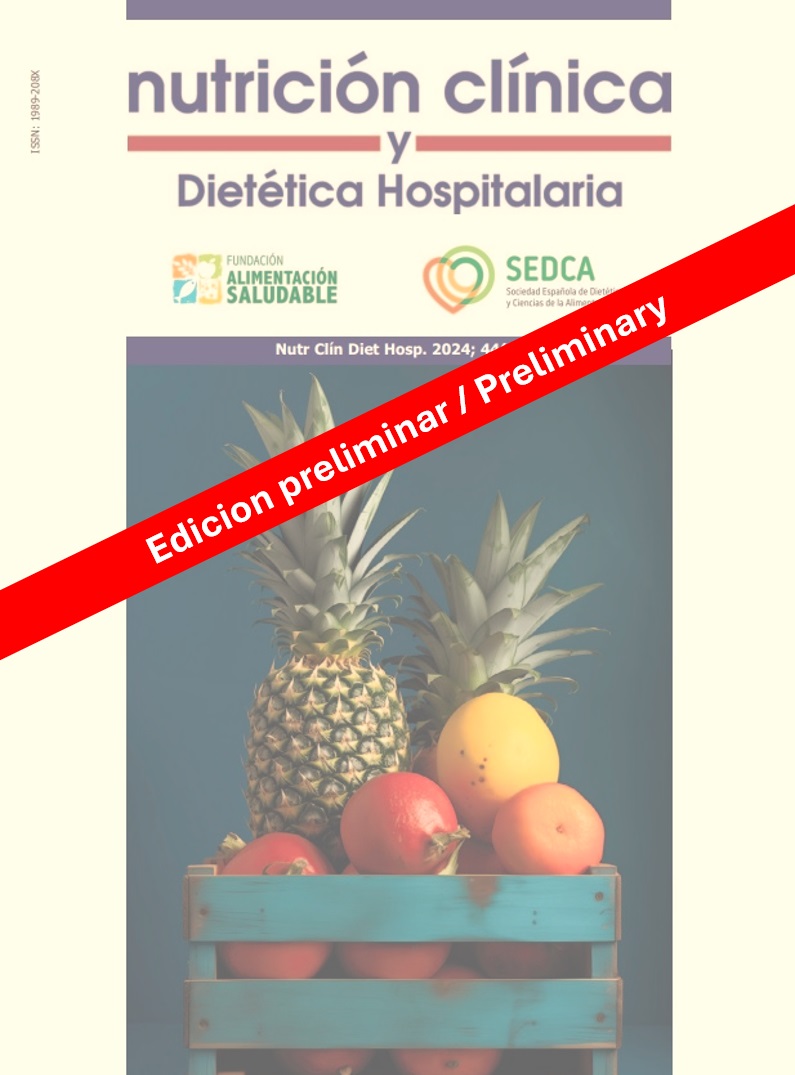Aplicación de nisina y lactobacillus plantarum como bioconservantes en salchicha a partir de dos especies de pescados: tilapia (Areochromis niloticus) y paiche (Arapaima gigas).
DOI:
https://doi.org/10.12873/451karolPalabras clave:
Areochromis niloticus, Arapaima gigas, bioconservante, embutidos, calidad microbiológica.Resumen
Introducción: La producción de salchichas de pescado enfrenta retos microbiológicos y de estabilidad. Estos desafíos son cruciales debido a las crecientes preocupaciones sobre la seguridad alimentaria.
Objetivo: Evaluar la aplicación de nisina y lactobacillus plantarum como bioconservantes en salchicha a partir de dos especies de pescados: tilapia (Areochromis niloticus) y paiche (Arapaima gigas).
Métodos: Se utilizó un diseño completamente al azar (DCA) con arreglo factorial A*B, donde el Factor A corresponde a los bioconservantes y el Factor B a las especies de pescado. Para determinar diferencias en las medias de los tratamientos, se aplicó la prueba de rangos múltiples de Tukey (p<0.05). Se evaluaron características fisicoquímicas (pH, humedad, ceniza, proteína y grasa) y la calidad microbiológica del producto final.
Resultados: En cuanto a la caracterización fisicoquímica, se observó una diferencia significativa (p<0.05) en función de la especie de pescado y el tipo de bioconservante utilizado. Los valores de pH se encontraron entre 5.50 y 6.81. Además, al incorporar Lactobacillus plantarum, se registró una reducción en los contenidos de humedad y ceniza, alcanzando valores de 19.30% y 2.01%, respectivamente. Por otro lado, el contenido de grasa y proteína estuvo influenciada por la especie utilizada, determinando que las muestras que se empleó Oreochromis niloticus mostraron un mayor contenido de proteína (10.55% - 11.90%) y grasa (15.15%.). En relación a la calidad microbiológica, tanto la nisina como Lactobacillus plantarum inhibieron significativamente los micoorganismos patógenos en comparación con las muestras sin bioconservantes.
Conclusiones: El tipo de pescado y los bioconservantes impactan significativamente la calidad de los embutidos. Los elaborados con Oreochromis niloticus sin bioconservantes presentaron pH y humedad elevados, mientras que Lactobacillus plantarum y nisina mejoraron la estabilidad del producto. La tilapia mostró mayor contenido proteico y graso que el paiche, y ambos bioconservantes inhibieron el crecimiento bacteriano
Referencias
Chemists. Official Method 952.08-1961 AOAC. Solids (Total) in Seafood. Gravimetric m. 1996. Rockville, MA, USA. http://www.aoacofficialmethod.org/index.php?main_page=product_info&products_id=1167
Instituto Ecuatoriano de Normalización [INEN]. Norma Técnica Ecuatoriana NTE INEN 783:1985. Carne y Productos cárnicos, Queso de cerdo, requisitos. 1996. https://es.scribd.com/document/591317298/Inen
Instituto Ecuatoriano de Normalización [INEN]. Norma Técnica Ecuatoriana NTE INEN 1338. Carne y Productos Cárnicos Crudos, Productos Cárnicos Curados-Maduros y Productos Cárnicos Precocidos-Cocidos. Requisitos. 2011. https://ia804702.us.archive.org/25/items/ec.nte.1338.2012/ec.nte.1338.2012.pdf
Talledo-Solórzano V, Chavarría-Minaya L, Zambrano-González S, Cuenca-Nevárez G. Efecto del uso de bacterias ácido lácticas en la inhibición del deterioro microbiológico de filetes de tilapia roja (Oreochromis sp.). J Cinigec. 2020; 5. https://doi.org/https://doi.org/10.5281/zenodo.4434700
Shamloofar M, Hoseini E, Kamali A, Motalebi-Moghanjoghi A, Poorgholm R. Antibacterial activities of nisin encapsulated in zein and modified atmosphere packaging on rainbow trout (Oncorhynchus mykiss) fillet during chilled storage 4°C. Iranian J Fish Sci. 2015; 2, 369–381. doi:jifro.ir/article-1-1890-en.html
Batista L, Caballero M, Granados C, Torrenegra M, Urbina G, Acevedo D. Elaboración de chorizo a base de pescado. Vitae 2012;19(1). https://www.redalyc.org/pdf/1698/Resumenes/Resumen_169823914070_1.pdf
Angelo-Geronimo HM, Gomes-DeOliveira M, Vasconcelos-DeOliveira E, Castelo-Branco N, Poeta-Casali A, Rosendo-Da Costa A, Ribeiro-Da Silva A, Sousa-Silva R, Montenegro-Stamford T. Production and Characterization of Emulsified Fish Mortadella From Nile Tilapia (Oreochromus niloticus). International Journal of Food Studies 2021; 10:203-220. https://www.iseki-food-ejournal.com/ojs/index.php/e-journal/article/viewFile/845/316 DOI: https://doi.org/10.7455/ijfs/10.1.2021.a7
Fuentes-Berrio L, Beltrán-Herrera V, Tarón-Dunoyer AA. Elaboración y caracterización de un embutido cárnico a base de pez sable (Trichiurus lepturus). @LIMENTECH CIENCIA Y Tecnología Alimentaria 2022;20(1). doi:10.24054/limentech.v20i1.1469 DOI: https://doi.org/10.24054/limentech.v20i1.1469
Alcívar-Alcívar GM. Características microbiológicas y organolépticas del salami aplicando nisina como conservante natural. Tesis de grado. 2018. https://repositorio.espam.edu.ec/bitstream/42000/889/1/TTAI8.pdf
Campagnoli-De Oliveira PR, Netto FM, Kawazaki-Ramos K, Trindade MA, Macedo-Viegas E M. Elaboration of Sausage Using Minced Fish of Nile Tilapia Filleting Waste. Brazilian Archives of Biology and Technology 2010;53(6):1383-1391. doi:10.1590/S1516-89132010000600015 DOI: https://doi.org/10.1590/S1516-89132010000600015
Roldán-Acero D, Molleda-Ordóñez A, Luján-Tantarico D, Omote-Sibina J. Elaboración de filete sin piel de paiche (Arapaima gigas) ahumado a baja temperatura. Ing. Ind. 2020; 39, 189-203. doi:10.26439/ing.ind2020.n039.4921 DOI: https://doi.org/10.26439/ing.ind2020.n039.4921
Hleap-Zapata JI, Rodríguez-DeLaPava GC. Physicochemical analysis of frankfurter type sausages made with red tilapia fillet waste (Oreochromis sp) and quinoa flour (Chenopodium quinoa W.). Brazilian Journal Food Technology 2018;21. doi:10.1590/1981-6723.10316 DOI: https://doi.org/10.1590/1981-6723.10316
Neira-Mosquera J, Plua-Montiel J, Sánchez-Llaguno S, Giler-Coello EK. Características bromatológicas, físicas y organolépticas de conservas de paiche (Arapaimas gigas) en aceite de sacha inchi (Plukenetia huayllabambana), ajonjolí (Sesamum indicum) y maní (Arachis hypogaea). Rev Ingen. Innov. 2020; 9(1). https://doi.org/https://revistas.unicordoba.edu.co/index.php/rii/article/view/2417
Liu Y, Ahmed S, Wang Y, Dai J, Shen S, Xiao S, Alomgir-Hossen M, Li S, Qin W. Novel natural microbial preservative nisin/Tremella fuciformis polysaccharide (TFP)/Lactobacillus plantarum (LP) live particle (NTN@LP) and its effect on the accumulation of biogenic amines during sausage fermentation. Chemical Engineering Journal 2022;417. doi:10.1016/j.cej.2021.131713 DOI: https://doi.org/10.1016/j.cej.2021.131713
Tayel A. Microbial chitosan as a biopreservative for fish sausages. Int J Biol Macromol. 2016; 93, 41-46. doi: 10.1016/j.ijbiomac.2016.08.061 DOI: https://doi.org/10.1016/j.ijbiomac.2016.08.061
Pal-Singh V. Recent approaches in food bio-preservation - a review. Open Vet J. 2018; 27(1), 104–111. doi:10.4314/ovj.v8i1.16 DOI: https://doi.org/10.4314/ovj.v8i1.16
Zanetti M, Carniel T, Dalcanton F, Silva-Dos Anjos R, Gracher-Riella H, De Araújo P, De Oliveira D, Fiori M. Use of encapsulated natural compounds as antimicrobial additives in food packaging: a brief review. Trends Food Sci Technol. 2018; 81, 51-60. doi:10.1016/j.tifs.2018.09.003 DOI: https://doi.org/10.1016/j.tifs.2018.09.003
Zhao Y, Wang Y, Li C, Li L, Yang X, Wu Y, Chen S, Zhao Y. Novel insight into physicochemical and flavor formation in naturally fermented tilapia sausage based on microbial metabolic network. Food Res Int. 2021; 141. doi:10.1016/j.foodres.2021.110122 DOI: https://doi.org/10.1016/j.foodres.2021.110122
Emïr-Çoban Ö. Production of fresh fish sausages containing natural preservatives (Laurus nobilis L.) its nutritional composition and oxidative stability. Progress in Nutrition 2020;22(2):501-506. doi:10.23751/pn.v22i2.8912
Descargas
Publicado
Número
Sección
Categorías
Licencia
Derechos de autor 2024 Nutrición Clínica y Dietética Hospitalaria

Esta obra está bajo una licencia internacional Creative Commons Atribución-NoComercial-SinDerivadas 4.0.
Los lectores pueden utilizar los textos publicados de acuerdo con la definición BOAI (Budapest Open Access Initiative)







